|
A Virtual Walk Through Jacksonville History
Stop 15: Cornelius C. Beekman House
Let’s walk across Laurelwood to 470 E. California Street and the 1873 home of Cornelius C. Beekman.
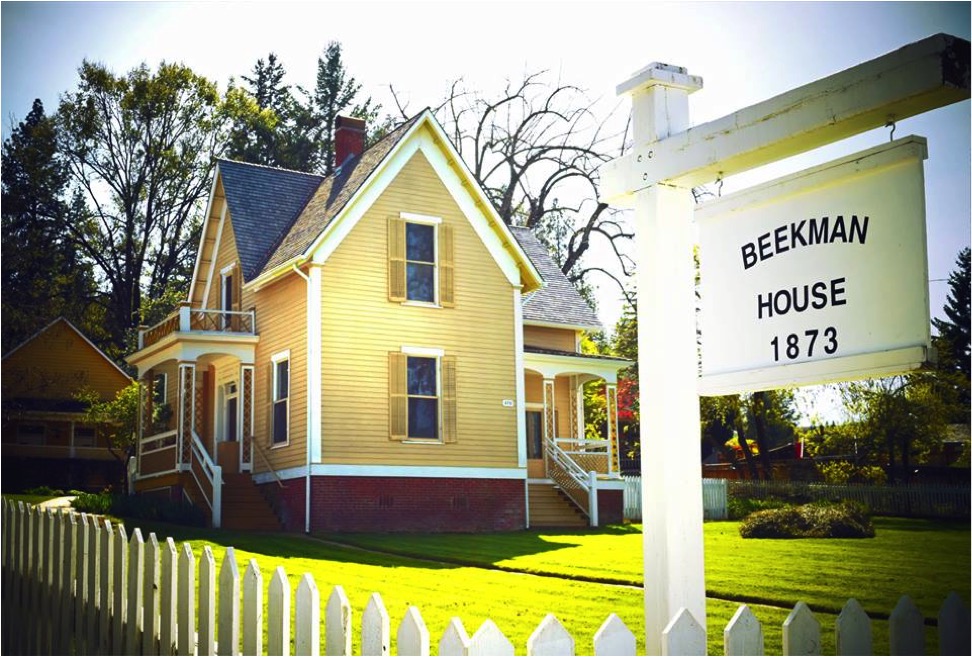
Beekman and Reames were not only neighbors, they were also business partners until Reames’ death in 1900. With the Beekman House, the Reames House, the Muller House and other California Street homes no longer standing, we are on Jacksonville’s pioneer equivalent of “millionaires’ row,” homes of self-made men who built their fortunes in Jacksonville.
Each of the three houses cited illustrates a different style of architecture that was popular during the Victorian era. The Muller house, built in 1887, represents High Victorian Italianate architecture—a romantic recreation of Italian Renaissance home characteristics. The Reames house, one of the larger homes in Jacksonville, displays characteristics of Queen Anne architecture which succeeded the Italianate in popularity.
Beekman chose the Victorian Gothic style of architecture, one of the earliest architectural styles associated with the Victorian era. It romanticized the Christian Medieval past and the romantic look of the great cathedrals of the Middle Ages, replacing the Greek and Roman “pagan” influence found in Classical Revival styles.
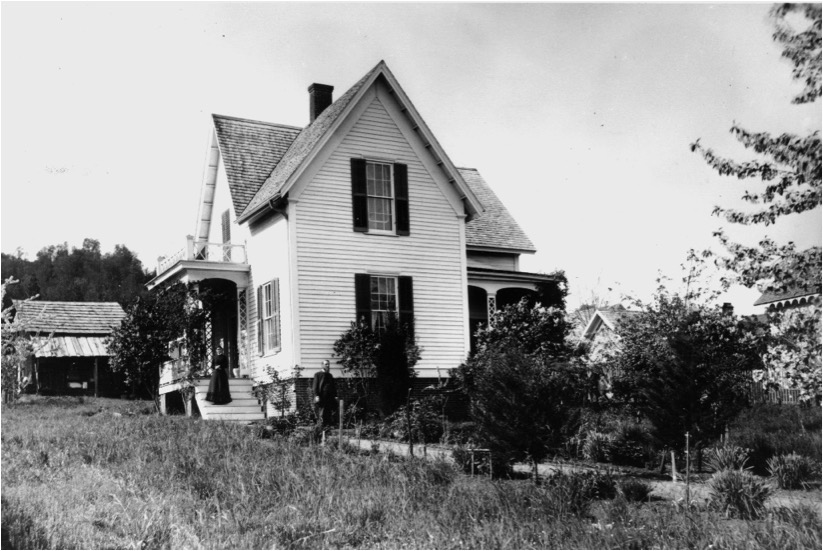 Beekman House, 1880s. Photo courtesy of SOHS. Beekman House, 1880s. Photo courtesy of SOHS.
Beekman’s house was built in what was called Carpenter Gothic which adapted Gothic elements such as pointed arches, steep gables, and towers to traditional American light-frame construction. Although the invention of the scroll saw allowed for elaborate mass-produced wood moldings, most Carpenter Gothic buildings were relatively unadorned, retaining only the basic elements of pointed-arch windows and steep gables.
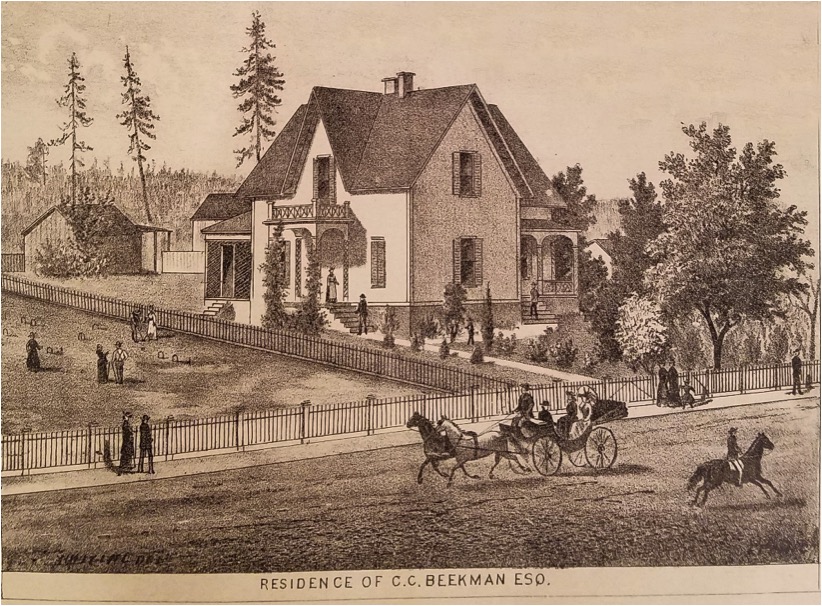 Lithograph Image from The West Shore Magazine, August 1883. Lithograph Image from The West Shore Magazine, August 1883.
Of Muller, Reames, and Beekman, Beekman was the most prominent. The 1950 edition of The Oregonian named Beekman one of Oregon’s 100 most influential individuals of the century.
And he was probably the most prominent and wealthiest man in pioneer Jacksonville. From humble beginnings as a carpenter and express rider, Beekman created a business empire of banking, insurance, mining, and real estate interests. His home, built between 1870 and 1876, did not truly reflect Beekman’s status. Its lack of pretension reflects the modesty that was a hallmark of the mid-Victorian era when ostentation was frowned upon.
In 1870, Beekman had purchased three adjoining parcels of land, a total of 28 acres of which three remain. (Original acreage is now part of the Beekman Arboretum and the Jacksonville Woodlands’ Beekman Trail.) Over the next few years, Beekman’s new 1 ½ story home was constructed. The builder and architect are unknown, although Beekman may have been the designer.
Born January 27, 1828, in New York City, Beekman trained to be a carpenter. He could have inherited his father’s successful carpentry business in Dundee, New York, but instead, at age 22, he crossed the Isthmus of Panama and sailed for San Francisco, lured by the promise of California gold like many other young men.
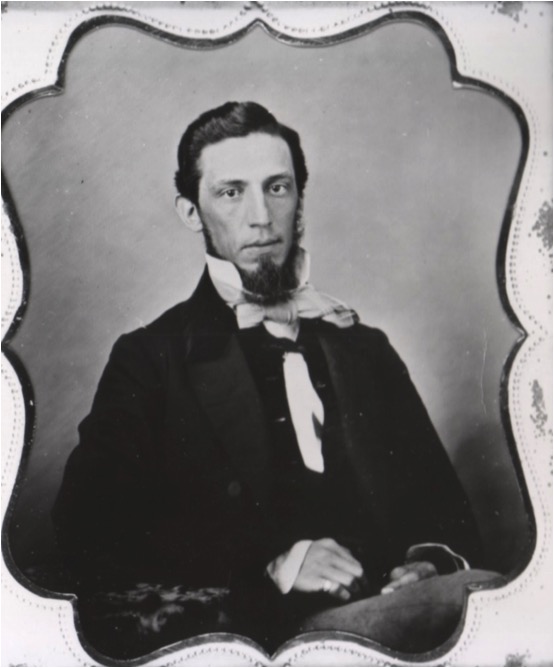 Cornelius C. Beekman – Mid-20s. Photo courtesy of SOHS Cornelius C. Beekman – Mid-20s. Photo courtesy of SOHS
In San Francisco, he built his “grub stake” by working as a carpenter. He then proceeded to Northern California where he prospected for three years in and around Yreka. He soon found, however, that he made more money building furniture and dwellings for the booming mining communities, earning up to $18 (an ounce of gold dust) a day.
In 1853, Beekman obtained a job with Cram, Rogers & Company, an express company in Yreka. The company sent him to a new mining town in Oregon, Table Rock City (renamed Jacksonville later that year), to be a “connecting agent.” Beekman himself rode two or three times a week from Jacksonville to Yreka carrying gold dust, parcels, and letters for miners and settlers over the Siskiyou Mountains.
When Cram, Rogers & Company failed in 1856, Beekman purchased their Jacksonville stables and corral for $100, and established Beekman’s Express. He operated out of a one-story structure that he shared with Dr. Charles Brooks Drugstores.
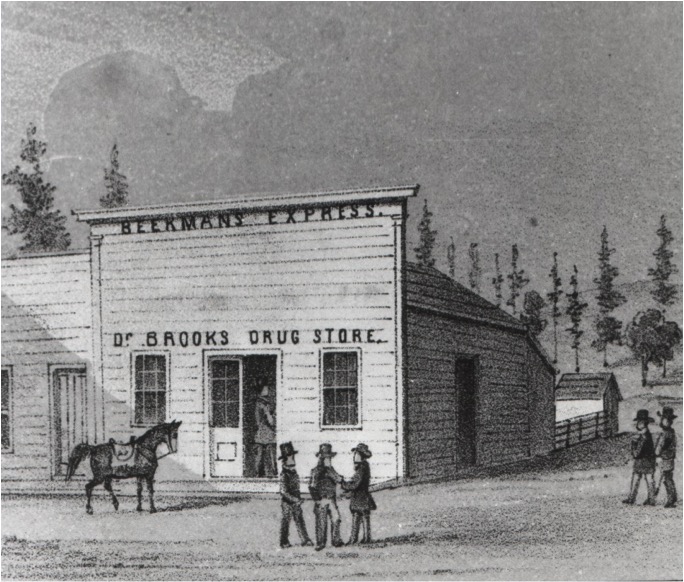 Beekmans Express and Dr. Brooks Drug Store – 1856 Lithograph Beekmans Express and Dr. Brooks Drug Store – 1856 Lithograph
Beekman also used this structure as a “gold dust office.” When Beekman acquired a safe in 1856 to store miners’ gold dust prior to shipment, Beekman’s Express became the first financial institution north of California, the oldest financial institution in the Pacific Northwest, and, depending on how you define a bank, the first bank in Oregon. He built the existing Beekman Bank building at the corner of California and North 3rd in 1863 when he became the Wells Fargo Express agent.
Beekman ran his bank with a personal touch. When someone wanted to borrow money and he approved of the request, Beekman loaned his own money rather than the bank’s. Each depositor’s money was left in the “poke” in which it came and was placed in the bank vault. Beekman also sold books, supplies, and stationery out of the bank. By 1887, the bank business was so demanding that he took in Thomas G. Reames as a partner. This partnership lasted until Reames’ death in 1901.
Beekman had other extensive business interests. He became an agent for the California & Oregon Stage Company in 1858. He was one of the founders of the Jackson County Land Association, an organization controlling large tracts of county land. Beekman invested in property and sold insurance; he built a steam stamp mill and a hydraulic mining operation; at one time he owned the famous Opp Gold Mine.
However, banking appears to have been the enterprise closest to his heart. The Beekman Bank weathered every national financial crisis, and Beekman even lent money to other banks to help them survive the panics of 1873, 1893, and 1907. Beekman’s financial skills were such that in the 1890s he was offered the presidency of the Commercial National Bank of Portland. He declined.
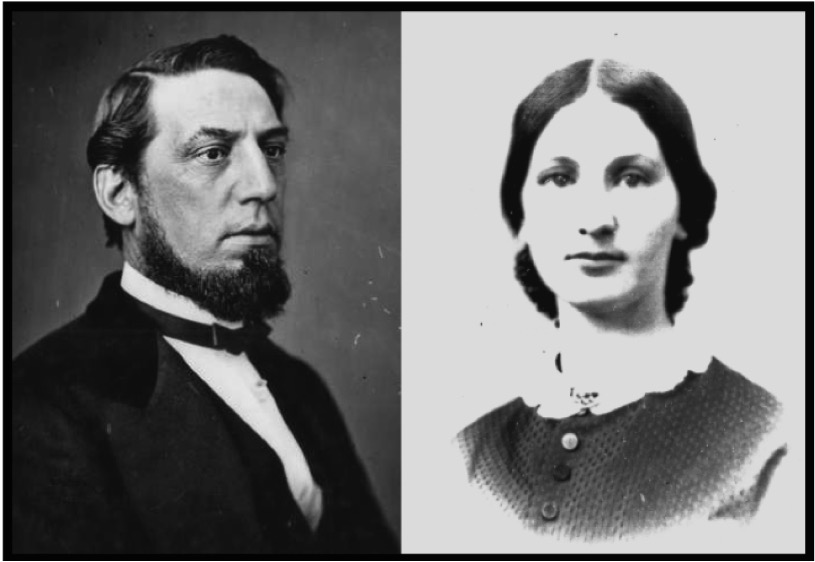 Cornelius Beekman and Julia Hoffman around 1861, the time of their marriage. Cornelius Beekman and Julia Hoffman around 1861, the time of their marriage.
Photos courtesy of SOHS.
In 1861, Beekman had married Julia Hoffman, daughter of another prominent Jacksonville family. The couple’s three children were born in their first home, located at the corner of California and Sixth streets. Ben, born in 1863, became a prominent Portland lawyer; Carrie, born in 1865, became a world traveler. Lydia, born in 1867, died in a measles epidemic only three weeks short of her 6th birthday and just prior to their moving into their new home. The family mourned her loss for years.
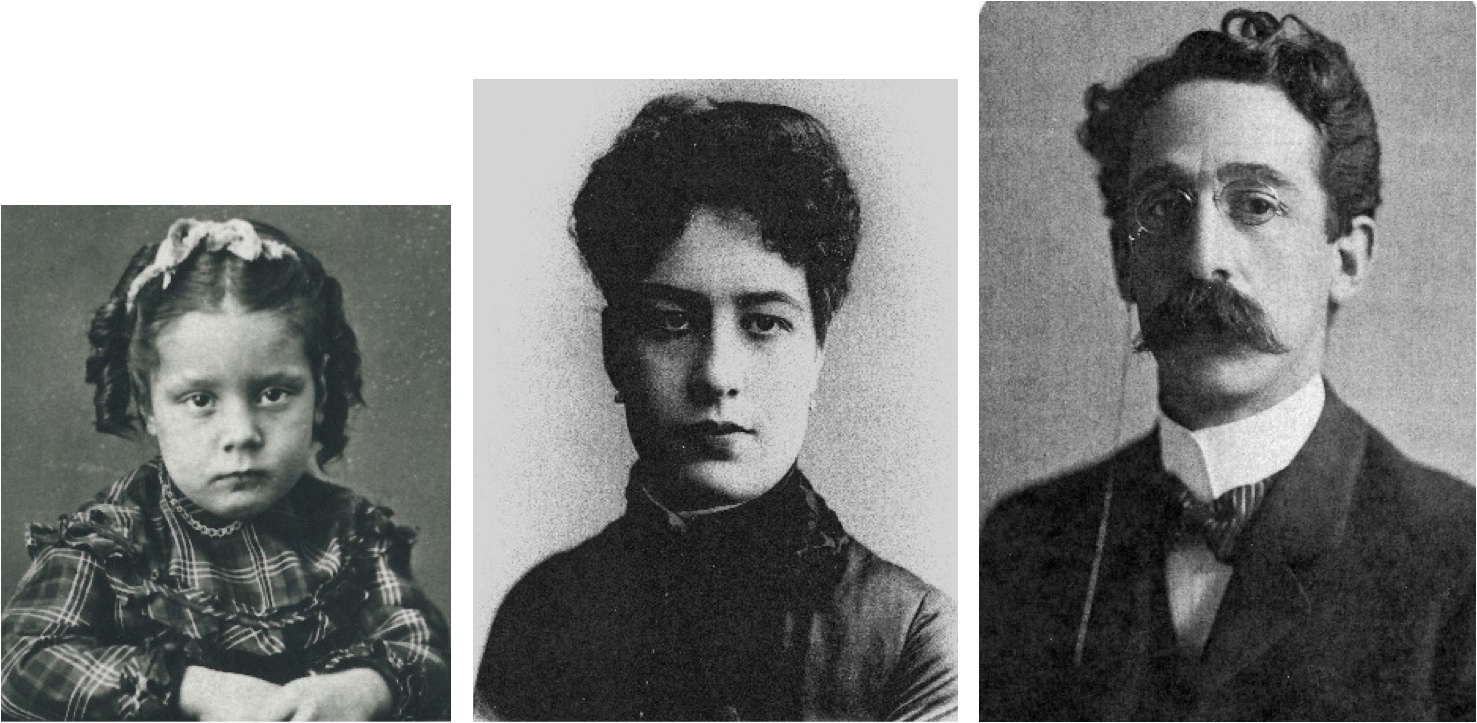 Lydia, Carrie (Caroline), and Ben (Benjamin) Beekman Lydia, Carrie (Caroline), and Ben (Benjamin) Beekman
Photos courtesy of SOHS.
Beekman was also a very civic-minded man, active in both politics and public life. While building his business, he also became the first Street Commissioner of Jacksonville, playing a role in setting the legal standards for city streets and sidewalks. He later played a prominent role in a campaign which resulted in Jackson County voting $500,000 in bonds to extend the Pacific Highway across the county. In 1869, he was elected to the Jacksonville school board and served as a delegate to the Republican National Convention.
A 32nd degree Mason, Beekman was a member of Jacksonville’s Warren Lodge No. 10 and its Worshipful Master for 11 years. He was repeatedly elected one of the trustees of Jacksonville, and for several terms served as mayor. In 1878, Beekman was drafted for Governor of Oregon on the Republican ticket. He did not campaign, but lost less than 70 votes. He was asked to run again in 1894 but declined.
He served as a regent for the University of Oregon from 1887 through 1902 and donated funds for the Failing-Beekman Prize. In 1908 he was a delegate to the National Peace Conference in Chicago.
By 1912, Beekman’s Bank had competition from the Bank of Jacksonville, new banking regulations had been introduced, and most businesses had moved to Medford.
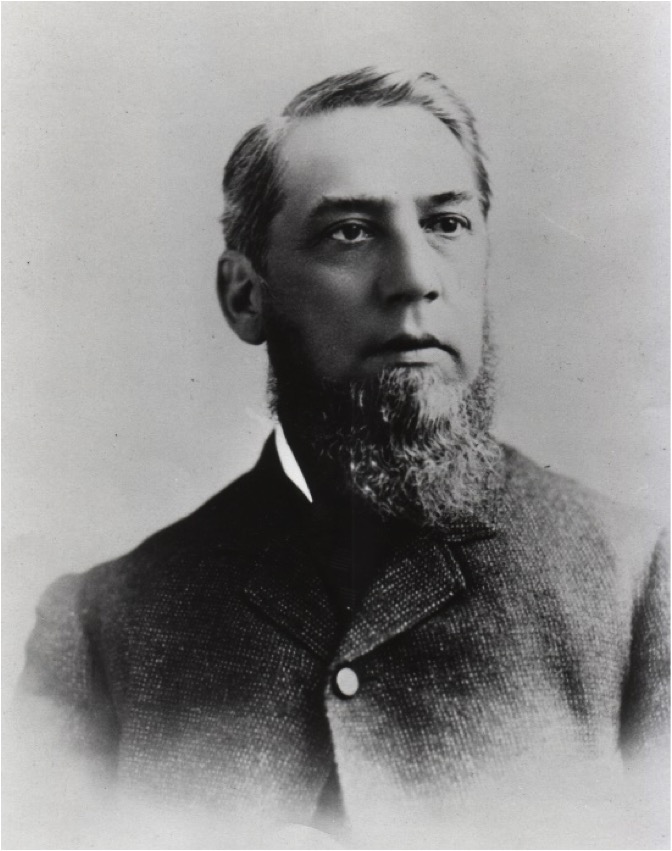 Beekman in his mid-40s. SOHS photo. Beekman in his mid-40s. SOHS photo.
He officially announced the closure of his bank that year but continued to operate for his old customers until his death in 1915.
The house remained in the family until daughter Carrie’s death in 1959. It is still completely furnished with family artifacts. Today the Beekman House Museum is owned by the City of Jacksonville and managed by Historic Jackonville, Inc.
If you are interested in the Victorian Gothic architectural style, Jacksonville’s historic Presbyterian Church at the corner of California and 6th streets, Stop #6 on our tour, is an excellent example. Cornelius Beekman was very instrumental in having the church built. His wife Julia was very devout and daughter Carrie played the church piano and organ, conducted the choir, and taught Sunday school.
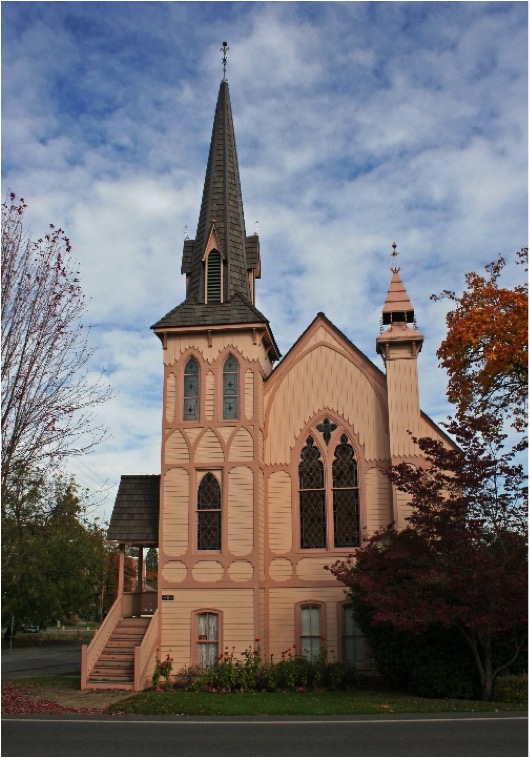
Although Beekman himself never joined the church, he donated the lot for the building, chaired the capital campaign, and paid for half of the structure’s $6,000 cost. According to a letter to his parents, he also engineered the structure and oversaw its construction. He paid one minister’s wages and provided an annuity for the minister’s widow. He donated property in Medford for both a Presbyterian Church and an Episcopal Church. When asked for a donation for the Presbyterian Church in Dundee, New York, he sent the total amount needed.
The church bell that tolled his death in 1915 was one that he himself had purchased on a trip to California in 1880. He had chosen a 1,000-pound bell with a deeper than normal tone—one that could be heard pealing for eight miles on a clear day.
Join us again next week as we visit another Jacksonville historical site!
Works cited:
“Pioneer Profiles,” Jacksonville Review; June, July, August, and September 2015.
Beekman Living History Program Training Manual, Southern Oregon Historical Society, 1997.
History of the Columbia River Valley. vol II, (Chicago: S.J. Clarke Publishing Co., 1928.)
Downs, Winfield Scott, ed. Encyclopedia of Northwest Biography (New York: American Historical Co., 1934.)
Evans, Gail E.H., Jacksonville Historical Survey¸ 1980.
|